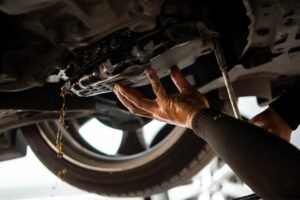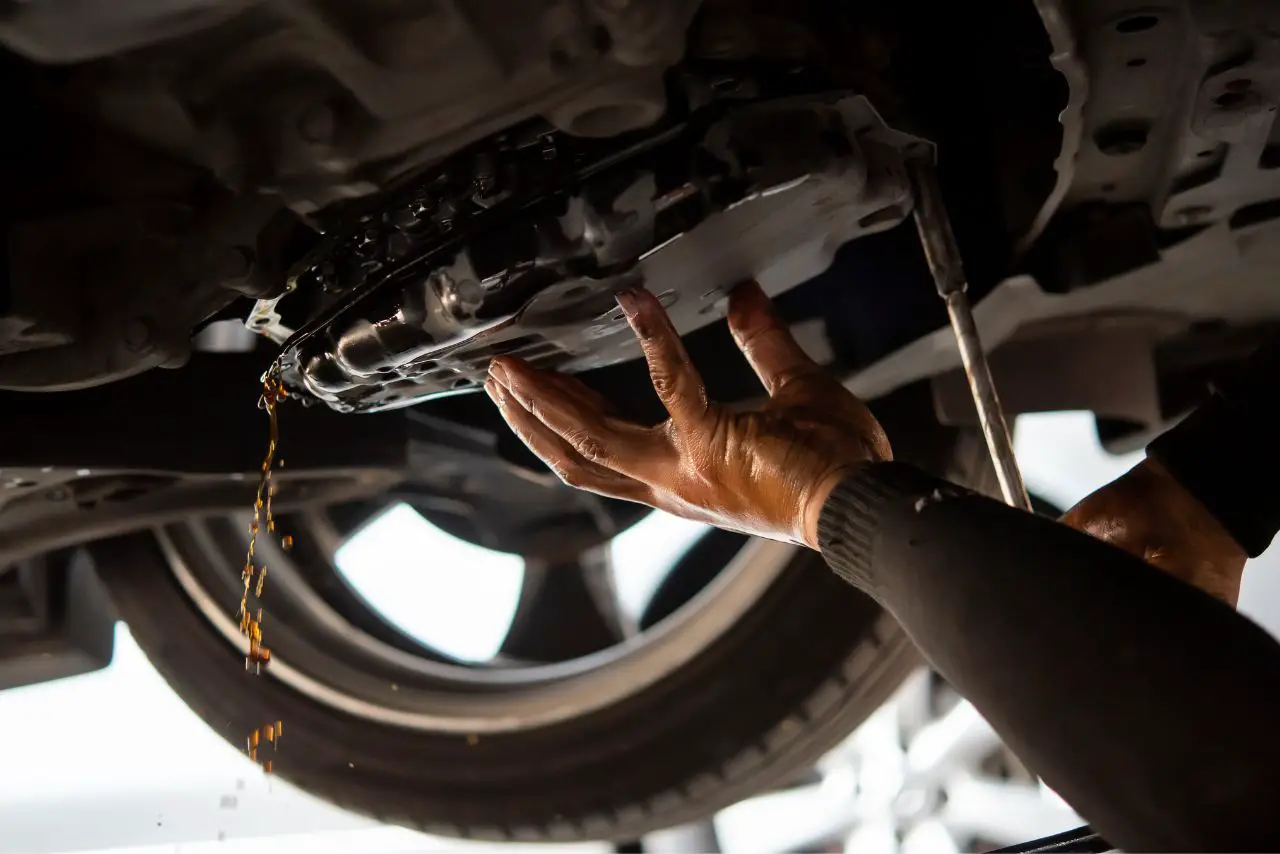Understanding what static means in cars is important for maintaining the safety and performance of your vehicle.
In this article, we will explore What Does Static Mean in Cars? the causes and effects of static electricity in cars and provide tips for preventing and dealing with static-related issues.
Whether you’re a seasoned driver or a new car owner, this information can help you stay safe on the road and keep your car running smoothly.
Table of contents
What Does Static Mean in Cars?
Static is a term used to describe a type of suspension setup in cars. It refers to a car that is lowered using coilover suspension and is set at a fixed ride height. This means that the car’s suspension is not adjustable, and the height of the car is fixed.
Static suspension setups are popular among car enthusiasts who want to achieve a lowered stance and a more aggressive look for their cars.
However, this type of setup can also affect the car’s handling and ride quality.
- One of the main benefits of a static suspension setup is that it provides a lower center of gravity for the car. This can improve the car’s handling and make it more stable in corners.
- However, the lowered ride height can also cause issues with speed bumps, steep driveways, and other obstacles on the road.
- Another consideration with static suspension setups is that they can be harsher on the car’s suspension components and tires.
- The fixed ride height means that the suspension is not able to adjust to changes in road conditions, which can cause more wear and tear on the components.
Overall, static suspension setups are a popular choice for car enthusiasts who want a lowered stance and a more aggressive look for their cars.
What Are The Different Type Of Stance?

The term “stance” in the automotive world refers to the overall look and position of a vehicle’s wheels and tires in relation to the fenders and body.
Different types of stances are popular in the car enthusiast community, and they often reflect the owner’s preferences and desired aesthetic. Here are some of the main types of stances:
- Flush/Stanced: In a flush stance, the wheels and tires are aligned with the fenders, creating a clean and even appearance. The sidewalls of the tires are usually flush or nearly flush with the fenders. This stance is achieved by using wheels with the proper offset and width and may require fender rolling or stretching of the tires.
- Tucked Stance: A tucked stance involves positioning the wheels and tires further under the vehicle’s body, giving the car a lower and more aggressive look. The wheels are hidden inside the fenders, and the car often appears to “hug” the ground. Achieving a tucked stance may require significant modifications to the suspension and fender wells.
- Poke Stance: In contrast to a tucked stance, a poke stance pushes the wheels and tires beyond the fenders. This results in a wider track and a more pronounced, outward appearance. While poke stance can be visually striking, it may not be legal in some regions due to safety concerns and potential interference with other vehicles or pedestrians.
- Negative Camber Stance: Negative camber refers to the angle at which the top of the wheel/tire tilts inward toward the vehicle’s centerline. In a negative camber stance, the wheels have an exaggerated inward tilt, often resulting in a visually aggressive and “track-inspired” look. However, excessive negative camber can negatively affect tire wear and handling characteristics.
- Zero Camber Stance: In a zero camber stance, the wheels are set to have no camber angle, remaining perpendicular to the ground. This stance prioritizes even tire wear and more predictable handling characteristics while maintaining a lowered appearance.
- Stretched Tires: Stretched tires are mounted on wider wheels, causing the sidewalls to be pulled inward, creating a stretched appearance. This style is often used in conjunction with flush or tucked stances to achieve a specific look.
- Scraping/Laying Frame: This extreme stance involves lowering the vehicle’s body to the point where it comes into contact with the ground or “lays frame.” Achieving this stance typically requires extensive modifications, including air suspension or hydraulic setups, to raise the vehicle when driving and lower it for display purposes.
It’s important to note that extreme stances, especially those that significantly deviate from the manufacturer’s specifications, can affect the vehicle’s handling, tire wear, and safety.
Before modifying your car’s stance, it’s essential to consult with knowledgeable professionals and ensure that the modifications comply with local laws and regulations.
Static stance is achieved with coilovers or aftermarket springs:
Achieving a static stance is commonly done by installing coilovers or aftermarket springs in the suspension setup of a vehicle.
These modifications allow for lowering the ride height and enhancing the overall appearance of the car.
Coilovers:
Coilovers are a popular choice for achieving a static stance because they offer a high level of adjustability.
They consist of a coil spring and a shock absorber integrated into a single unit. With coilovers, you can typically adjust the ride height by adjusting the spring perch or the lower mount of the shock absorber.
This adjustability allows you to fine-tune the suspension setup to your desired static ride height while still maintaining proper suspension travel and performance.
Aftermarket Springs:
Aftermarket springs are another option for achieving a static stance. These springs are designed to replace the factory springs in the suspension system.
They are available in different spring rates and heights, allowing you to choose a setup that suits your desired stance.
By installing lower and stiffer aftermarket springs, you can effectively lower the ride height of the vehicle and improve its visual appeal.
Both coilovers and aftermarket springs can be installed by experienced professionals or knowledgeable enthusiasts who understand the intricacies of suspension modifications.
It’s important to note that achieving a static stance may require additional modifications such as fender rolling or modifications to the suspension components to prevent rubbing or clearance issues.
When considering modifications for a static stance, it’s crucial to strike a balance between aesthetics and functionality.
Lowering the ride height too much or choosing overly stiff suspension components can negatively impact the vehicle’s ride quality, handling, and tire wear.
Consulting with experts and researching reputable brands and products can help ensure a successful static setup that meets your desired goals.
Effects of Static in Cars:
Static suspension is a popular modification for car enthusiasts who want to achieve a lowered ride height and a more aggressive stance.
However, there are some potential negative effects of static suspension that should be considered before making the modification.
Reduced Ride Comfort:
One of the most significant effects of static suspension is a reduction in ride comfort.
Because the car is lowered and the suspension is stiffened, the car will feel every bump and imperfection in the road.
This can make for a very uncomfortable ride, especially on rough roads or over long distances.
Poor Handling:
Another potential negative effect of static suspension is poor handling. Because the car is lowered, the center of gravity is also lowered.
This can make the car feel more stable in turns, but it can also make the car more prone to understeer or oversteer.
Additionally, because the suspension is stiffened, the car may not be able to absorb bumps and imperfections in the road as well, which can lead to unpredictable handling.
Increased Wear and Tear:
Finally, static suspension can also increase wear and tear on other parts of the car.
Because the suspension is stiffened, the car may experience more vibration and shock, which can cause damage to other components like the wheels, tires, and even the chassis.
Overall, while static suspension can be a popular modification for car enthusiasts, it is important to consider the potential negative effects before making the modification.
Reduced ride comfort, poor handling, and increased wear and tear are all potential consequences of static suspension that should be taken into account.
Static Setup – Coilovers Vs Springs Which Is Better?

When it comes to the debate between coilovers and springs for a static setup, it ultimately boils down to personal preference and specific goals for your vehicle.
As a car enthusiast who has explored both options, I can share my insights and experiences.
- Firstly, let’s discuss coilovers. Coilovers consist of a coil spring and a shock absorber integrated into a single unit. They offer several advantages, primarily in terms of adjustability.
- With coilovers, you have the ability to fine-tune your suspension setup by adjusting the ride height, damping force, and sometimes even the spring rates.
- This adjustability allows you to achieve a balance between performance and comfort, tailoring the suspension to your driving style and the characteristics of your vehicle.
- Coilovers also tend to provide better handling and control compared to springs alone.
- The integrated shock absorber helps in dampening the suspension movement, reducing body roll, and improving overall stability during cornering and braking.
- If you’re someone who enjoys spirited driving or participates in track events, coilovers can offer significant performance benefits.
- On the other hand, springs are a simpler and more cost-effective option. They are essentially just the coil springs themselves, without the integrated shock absorber.
- Springs are available in different spring rates, allowing you to choose a setup that suits your desired ride height and stiffness.
- They can provide a lower ride height and improved aesthetics for your car, giving it a more aggressive and sporty look.
- Springs generally offer a smoother ride compared to coilovers, especially when using progressive springs.
- Progressive springs have varying spring rates throughout their compression, providing a softer initial ride over bumps and a stiffer response during hard cornering or braking.
- If comfort is a priority, and you mainly use your car for daily commuting or long drives, springs might be the more suitable choice for you.
Ultimately, the decision between coilovers and springs for a static setup depends on your specific needs and preferences.
If you prioritize adjustability, performance, and a more aggressive stance, coilovers are likely the better option.
However, if you’re looking for a simpler and more budget-friendly solution that prioritizes comfort while still enhancing the aesthetics, springs can be a viable choice.
It’s worth noting that both options require proper installation and alignment to ensure optimal performance and longevity.
Additionally, consulting with suspension experts or experienced car enthusiasts can provide valuable insights and recommendations tailored to your specific vehicle and goals.
What Does It Mean when A Car Is Bagged?
When a car is “bagged,” it refers to a modification in which the traditional coil springs or coilovers in the suspension system are replaced with air suspension.
Air suspension utilizes air-filled bags, also known as air springs or airbags, to support and adjust the height of the vehicle.
In a bagged car, the airbags are typically mounted on each corner of the vehicle’s suspension.
These airbags are connected to an air compressor and a control system that allows the driver to adjust the air pressure within the bags.
By increasing or decreasing the air pressure, the ride height of the car can be adjusted accordingly.
- One of the main advantages of a bagged car is the ability to achieve extremely low ride heights when desired, often referred to as “laying frame.”
- This means that the body of the car sits very close to or even touches the ground, creating a distinctive and aggressive aesthetic.
- Bagged cars are often associated with the stance and custom car culture, as they allow for a highly customizable and unique appearance.
- Furthermore, air suspension provides the flexibility to adjust the ride height on the fly. Depending on the driving conditions or personal preference, the driver can raise the car for better ground clearance or lower it for improved handling and a more aggressive look.
- However, it’s important to note that bagged cars require careful installation and proper maintenance to ensure optimal performance and reliability.
- The air suspension components should be installed by experienced professionals who understand the intricacies of the system.
Regular maintenance is also crucial to prevent leaks, maintain proper air pressure, and ensure the longevity of the system.
Overall, a bagged car offers the ability to achieve adjustable ride heights and a visually striking appearance. It’s a modification favored by car enthusiasts who seek a unique stance and customizable suspension setup.
Preventing Static in Cars:
Static in cars refers to the buildup of electrical charges that can cause discomfort and even harm to passengers. It can also damage electronic devices in the car. Here are some ways to prevent static in cars:
- Use an anti-static spray on the seats and carpet to reduce the buildup of static electricity.
- Avoid wearing clothing made of synthetic materials, which can contribute to static buildup.
- Install an anti-static strap on the underside of the car to ground the electrical charges and prevent them from building up.
- Make sure that the tires are properly inflated, which can help to reduce static buildup.
By taking these simple steps, you can help to prevent static in your car and ensure that your passengers are comfortable and safe.
Conclusion and final thoughts 💭
Understanding the term “static” in relation to cars is important for anyone interested in car modification. It refers to a car that is on coilover suspension and at a fixed ride height.
This means that the car’s suspension has been adjusted to a specific height and is not adjustable on the fly like a traditional air suspension system.
While static suspension can provide a more aggressive look and improved handling performance, it also comes with some downsides.
The fixed ride height can make it difficult to navigate uneven roads and speed bumps, and the lack of adjustability can limit the car’s versatility.
Overall, deciding whether or not to go static is a personal choice that should be made based on individual preferences and driving habits.
It’s important to weigh the pros and cons carefully before making a decision, and to consult with a professional mechanic or suspension specialist to ensure that the chosen setup is safe and appropriate for the car in question.
- 10 Best Gear Oil for Limited Slip Differentials (Reviewed!)
- Allison 1000 Transmission Fluid Type (5 Best Options!)
- 91 Octane Vs 93 Which One You Use? (The Surprising Truth!)
- Oil Pressure Gauge Not Working: (Guaranteed Fix!)
- 10 Best Transmission Fluid for 4l60e (Tested by Experts!)
- 10 Best Ceramic Coating For Wheels (Used By Real Users!)












Leave a Reply